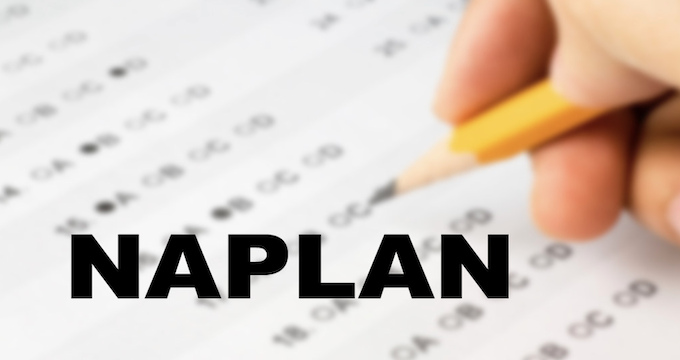This is the second instalment of our two-part series addressing claims made about NAPLAN data. The first part is here.
We begin this section by addressing a comment made in ABC media reporting on 2025 NAPLAN results.
“We’ve seen declines in student achievement despite significant investment in funding of the school system”
This comment echoes a broader theme that re-surfaces regularly in public discussions of student achievement on standardised tests. There are two aspects of this comment to unpack and we address each in turn.
No evidence
First the concept that student achievement is declining is demonstrably untrue if we evaluate NAPLAN data alone. There is no evidence that student achievement in NAPLAN declined between 2008 and 2022 – and indeed there were some notable gains for Year 3 and Year 5 students in several domains. Results from 2023 to 2025 have remained stable across all Years and all domains.
By contrast, there have been well-documented declines in average achievement in the Reading, Mathematics and Scientific Literacy tests implemented by the Programme for International Student Assessment (PISA). PISA tests are undertaken by Australian 15-year-old students every three years. The most recent data, from the 2022 assessment round showed that these declines had flattened out in all three test domains since the 2015 round: in other words the average decline has not continued after 2015.
There’s plenty of speculation as to why there have been declines in PISA test scores specifically, and there are enough plausible explanations to suggest that no single change in schools, curriculum, pedagogy or funding will reverse this trend. Nonetheless it is important to highlight the contrast between PISA and NAPLAN and not conflate the two in public discussion about student performance on standardised tests.
Before Gonski, schools were relatively underfunded
The second aspect of the claim above is that increases in school funding should have resulted in improvements in NAPLAN achievement (notwithstanding the fact that average results are not trending downwards). School funding has increased since the publication of the first Gonski report in 2011, and subsequent government efforts to adequately fund schools as per the model agreed upon. This is one reason why the total amount of money spent on schooling has increased in the last 10-15 years: because prior to Gonski, government schools were relatively underfunded across the board (and many remain so).
A second reason relates to government policies resulting in more children staying in school for longer (arguably a good thing). The 2009 National Report on Schooling in Australia (ACARA, 2009) produced a handy table identifying new state and territory policies aimed at increasing the proportions of students engaged with education, training or employment after the age of 15 (p. 36). For example, in NSW (the largest jurisdiction by student numbers), the new policy from 2010 was as follows:
“(a) From 2010 all NSW students must complete Year 10. After Year 10, students must be in school, in approved education or training, in full-time employment or in a combination of training and employment until they turn 17.”
Students stay at school longer
This and similar policies across all states and territories had the effect of retaining more students in school for longer, therefore costing more money.
The other reason total school funding has increased is simple: growth in total student numbers. If there are more students in the school system, then schools will cost more to operate.
According to enrolment statistics published on the ACARA website, from 2006 to 2024, the number of children aged 6 – 15 enrolled in schools increased from 2,720,866 to 3,260,497. This represents a total increase of 539,631 students, or a 20% increase on 2006 numbers. These gains in total student numbers were gradual but consistent year on year. It is a pretty simple calculation to work out: more students = higher cost to schools.
Students who ‘start behind, stay behind’
The design of the NAPLAN tests allow an excellent opportunity to test claims that children who start with poor achievement never ‘catch up’. Interestingly, the Australian Education Research Organisation published a report in 2023 that calls into question this idea. The AERO report demonstrated that of all the children at or below the National Minimum Standard (NMS) in Year 3 (187, 814 students in their national sample), only 33-37% remained at or below NMS to Year 9.
We can explain this another way using the terminology from the new NAPLAN proficiency standards. Of the ~10% of students highlighted as needing additional support, it is likely that one third of these students will need that additional support throughout their schooling – or around 3.5% of the total population. The remainder of the students needing additional support in Year 3 in fact did make additional gains and moved up the achievement bands as they progressed from Year 3 to Year 9.
AERO’s analyses supported other research that had used different methods to analyse longitudinally matched NAPLAN data. This research also showed no evidence that students starting at the bottom of NAPLAN distributions in Year 3 fell further behind. In fact, on average, students starting with the poorest achievement made the most progress to Year 9.
Sweeping inaccurate claims
Consistently supporting students who need additional help throughout their school years is something that teachers do and will continue to do as part of their core business. Making sweeping claims that are not supported by the available data is problematic and doesn’t ultimately support schools and teachers to do their jobs well.
In recent weeks, there have been some excellent and thoughtful pieces calling for a more careful interpretation of NAPLAN data, for example here and here. It is disappointing to see the same claims recycled in the media year after year, when published, peer-reviewed research and sophisticated data analyses don’t support the conclusions.

Sally Larsen is a senior lecturer in Education at the University of New England. She researches reading and maths development across the primary and early secondary school years in Australia, interrogating NAPLAN. Thom Marchbank is deputy principal academic at International Grammar School, Sydney and a PhD candidate at UNE supervised by Sally Larsen and William Coventry. His research focuses on academic achievement and growth using quantitative methods for understanding patterns of student progress.





